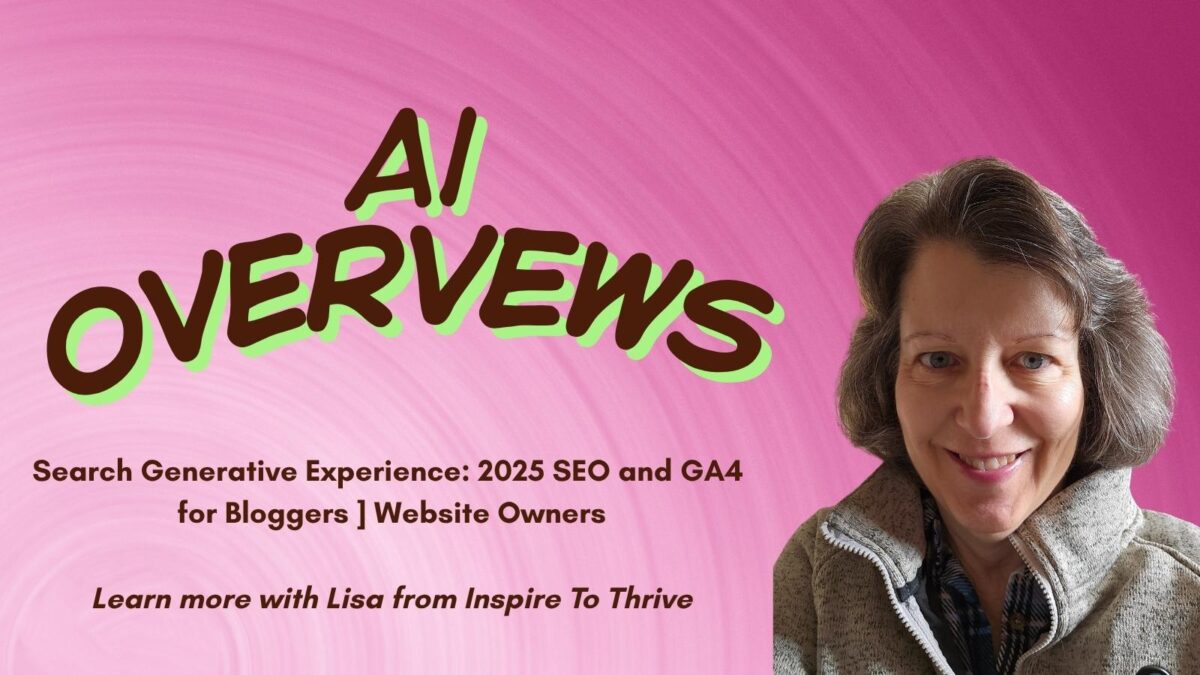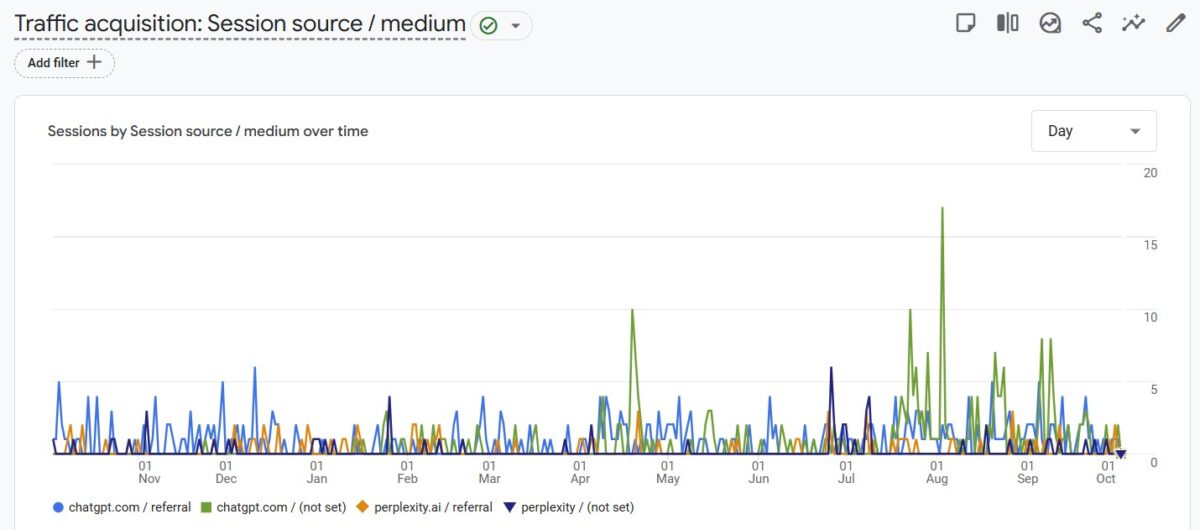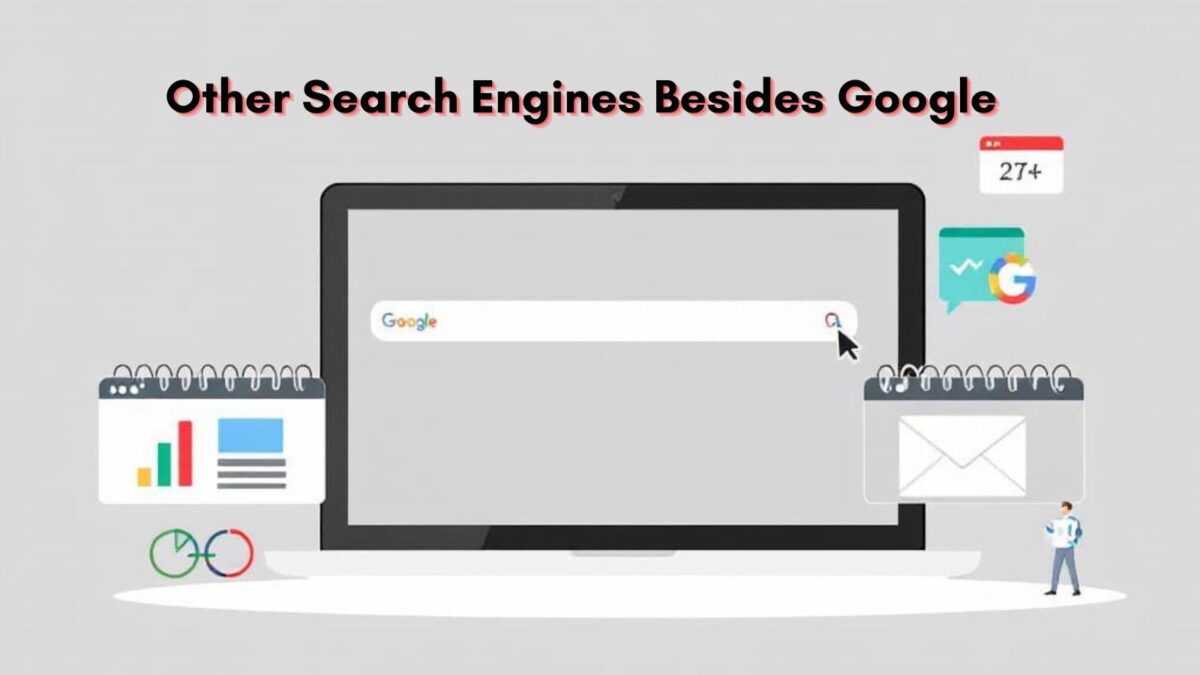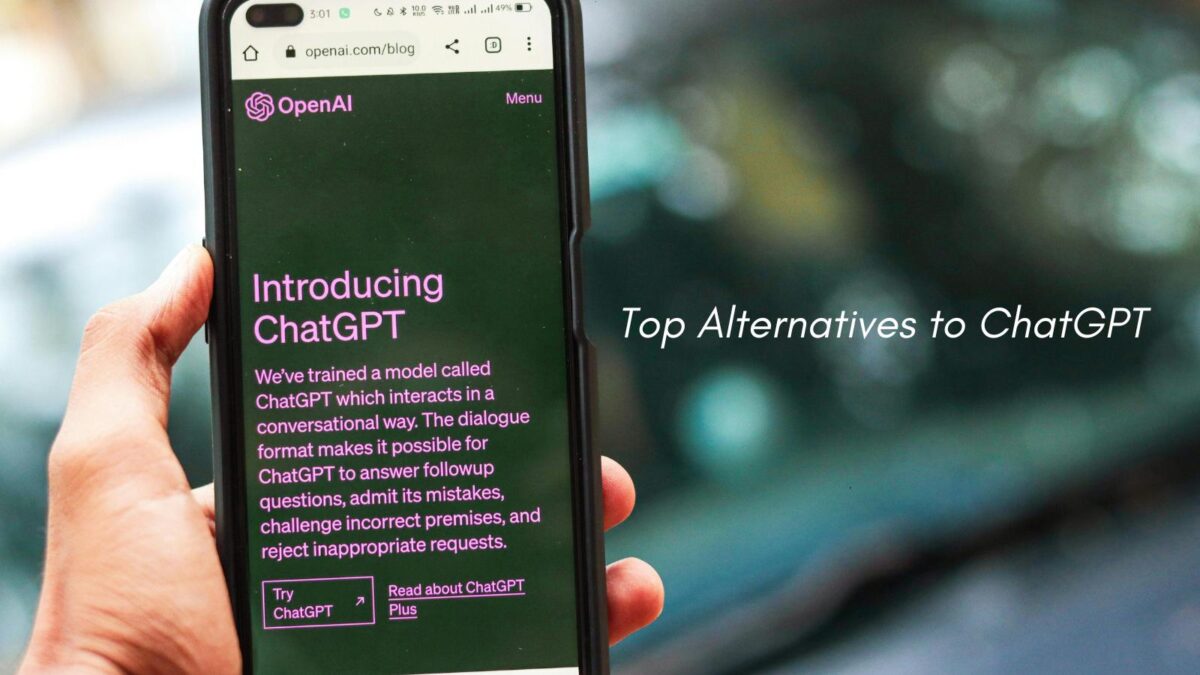What if your readers got answers before they ever clicked a link? That is the shift happening in Google Search with Google’s search generative experience, and it affects every website owner and blogger.
SGE is Google’s Generative AI. It creates AI Overviews at the top of results, using short text, images, and links pulled from helpful pages like yours and the Knowledge Graph. People see context fast, then decide what to click.
This matters for 2025 because clicks will concentrate on results featured in SGE. If your content fits what the AI wants, you can still earn strong organic traffic. If it does not, you may see a drop, even with good rankings.
The good news, you can optimize for it through SEO optimization. SGE rewards clear answers, clean structure, original insights, and trust signals. Think problem, answer, proof, next step, all on one page.
In this Inspire To Thrive post, you will learn how to show up inside SGE and win those featured links. You will also see how to track SGE’s impact in GA4, including if your blog or website shows up.
However, you do not need a huge team or a complex setup. You need focused pages that match search tasks, smart internal links, and simple schema where it helps.
Let’s get your content seen, clicked, and measured.
Table of Contents
What Is Search Generative Experience and Why Should Bloggers Care?
Google’s Search Generative Experience (SGE) is a Generative AI feature in Search that uses the Gemini model to build a personalized, summarized response at the top of results. Instead of just listing links, SGE compiles short text, images, videos, and citations from multiple sources.

Picture searching “best SEO tips for bloggers” and seeing an instant overview with key tactics, a few source links, and a short video snippet.
In 2025, this summary often sits above everything else on search results pages, which changes how people discover and click—much like AI summaries from competitors such as Perplexity AI and ChatGPT.
How To Track Your AI Overviews in GA4
Here is a quick video to see if your blog or website is coming in AI overviews.
How SGE Differs from Traditional Search Results
Traditional search results returned a page of links and snippets. SGE acts like a fast, curated briefing powered by an LLM.
Key differences to watch:
- Layout: Old search had 10 blue links. SGE shows AI Overviews with direct answers, visuals, and cited sources, integrating features like the Shopping Graph and visual search.
- User flow: Zero-click outcomes rise, since many users get enough info without visiting a site.
- Content model: SGE pulls from multiple pages to build a cohesive answer, then surfaces a few links as citations.
- Interaction: Users can adjust the prompt, refine the question, ask follow-up questions, or explore complex questions in a conversational way.
Small business example: a local bakery blog that explains sourdough care could be cited in SGE for “how to store sourdough.” That mention may spark brand discovery, even if fewer people scroll to the classic results.
Opportunity for bloggers:
- Authority via citations that feature your name, brand, and unique tips.
- Risk of traffic loss on quick-answer queries, like definitions or checklists.
The Impact of SGE on Your Website’s Organic Traffic
In 2025, SGE appears on more queries, which shifts click patterns. When your content is cited, you can gain brand awareness, repeat visitors, and assisted conversions. When the panel satisfies intent, clicks to your page can drop.
How to protect and grow traffic:
- Target long-tail intent: cover specific tasks, not just broad topics.
- Show E-E-A-T: add bylines, credentials, sources, and first-hand examples.
- Structure for answers: use clear headings, FAQs, and step-by-step sections.
- Publish original insights: data, templates, or case learnings that SGE can quote.
- Create depth beyond the snippet: offer tools, downloads, or visuals that make clicking worthwhile.
Think of SGE as a new front door. If your page proves expertise and solves the next step, you earn the citation and the click.
Proven Strategies to Show Up in Search Generative Experience
You can earn citations inside the search generative experience by publishing helpful content, marking it up with clear data, and targeting real questions people ask. Think of SGE as a fast briefing.
Your job is to make your page the easiest source for Google to quote.

Create Content That AI Loves: Focus on Depth and Structure
SGE rewards pages that read like a complete answer, not a teaser. Build articles that match a task, then guide readers to the next action—content that generative AI can easily process and utilize.
Try this format:
- Lead with the answer: One or two sentences that solve the query.
- Back it up: Short sections with steps, examples, and links to sources.
- Use clean structure: H2s and H3s, plus scannable lists, tables, and short paragraphs. Good structure like this helps SGE produce better AI-generated responses.
- Add unique proof: Screenshots, mini case studies, templates, or a checklist. This setup positions your content well for an AI-organized results page.
For topic ideas, use AnswerThePublic or Google’s People Also Ask. Pull question clusters, then add an FAQ at the end. Example:
- How can bloggers improve SEO in 2025?
- What is search generative experience for bloggers?
- Are FAQs still useful for SGE?
For Inspire To Thrive readers, combine blogging best practices with SEO basics:
- Write with intent: tutorials, comparisons, and how-tos for tools like Instagram, X, and GA4.
- Keep tone human: natural language and active voice. Avoid fluff.
- Link smart: internal links to related posts and services, like content promotion or consultations.
Leverage Structured Data to Boost Your Visibility in SGE
Structured data helps Google understand your page type and key details. Use JSON-LD for Articles, FAQs, and HowTo content. This markup can help your info appear in SGE panels and rich results.
Basic Article + FAQ example (plain text):
{ “@context”: “https://schema.org“, “@type”: “Article”, “headline”: “SEO Tips for Bloggers in 2025”, “author”: { “@type”: “Person”, “name”: “Lisa Sicard” }, “datePublished”: “2025-01-10”, “mainEntityOfPage”: “https://inspiretothrive.com/seo-tips-2025“, “publisher”: { “@type”: “Organization”, “name”: “Inspire To Thrive” } } { “@context”: “https://schema.org“, “@type”: “FAQPage”, “mainEntity”: [ { “@type”: “Question”, “name”: “What is search generative experience?”, “acceptedAnswer”: { “@type”: “Answer”, “text”: “It is Google’s AI summary in Search that cites sources.” } }, { “@type”: “Question”, “name”: “How can bloggers get cited?”, “acceptedAnswer”: { “@type”: “Answer”, “text”: “Publish clear, structured answers with schema, E-E-A-T, and examples.” } } ] }
How to apply:
- Add JSON-LD to each post template.
- Mark up FAQs and step-by-step sections.
- Test with Google’s Structured Data Testing Tool or the Rich Results Test.
- Fix errors, then monitor impressions in Search Console.
Or install the Yoast Premium plugin and let it do it for you as I do here on Inspire To Thrive.
Optimize for Conversational Searches and User Intent
SGE picks pages that match how people speak in conversational mode. Target long, natural questions and tight follow-ups.
Action plan:
- Research: In SEMrush, Ahrefs, or Ubersuggest to find long-tail keywords with modifiers like how, which, near me, for beginners, in 2025. Include terms like search generative experience, GA4 for bloggers, and social media tips.
- Map intent: Is the user learning, comparing, or acting? Write one page per intent.
- Write conversational headers: Example H2, How can bloggers improve SEO in 2025?
- Answer fast on mobile: Short intros, visible headings, and clear CTAs.
- Speed matters: Optimize images, use caching, and choose a fast theme. Slow pages lose SGE clicks.
Track performance in Search Console:
- Review Queries for new question-style terms.
- Compare impressions and CTR for pages with FAQs or HowTo.
- Add missing follow-up questions to your FAQs to win more SGE coverage.
Stay ethical. Skip clickbait, spun text, or fake FAQs. Publish real answers, cite sources, and keep your site fast. That combination earns trust with readers and SGE.
How to Track Search Generative Experience Performance Using GA4
You can measure the impact of search generative experience with GA4, as long as you link the right data and build a simple workflow. The goal is to see where SGE citations help awareness, how clicks shift, and which pages still convert.
Setting Up GA4 for SGE Insights
Follow these steps to get clean signals fast:
- Link GA4 to Search Console: In GA4, go to Admin, Product links, Search Console links, then connect your verified property and pick the web data stream.
- Verify site data: Confirm domain property in Search Console and ensure accuracy for your web content. Make sure you see queries and pages for the past 28 days.
- Enable enhanced measurement: In GA4, turn on page views, site search, scrolls, and outbound clicks.
- Build a basic SGE exploration: Use Explore, then create a Free Form with Dimensions: Query, Page path, Session default channel group. Add Metrics: Impressions, Clicks, CTR, Average position.
- Filter for SGE-prone queries: In Search Console reports inside GA4, add filters like question words (how, what, best), comparison terms (vs, compare), and quick answers. These often trigger SGE.
- Track citations and mentions: Add a Looker Studio dashboard that blends GA4 and Search Console. Include a table of brand mentions from Referral and Organic channel pages that gained impressions without click growth.
- Add custom events: Create
sge_refine_clickfor clicks on FAQ jump links,sge_assist_viewfor visits that start on pages often cited in SGE, andbrand_mention_sessionwhen the landing page contains your brand plus query terms in the referrer.
Key Metrics to Monitor in GA4 for SGE Success
Focus on signals that show SGE influence:
- Impressions vs. clicks: High impressions with low clicks suggest zero-click answers.
- CTR by query theme: Question-led keywords may drop in CTR if SGE satisfies intent.
- Bounce rate and engagement rate: From Organic Search sessions, watch for quick exits on quick-answer topics.
- Conversion paths: Use Attribution to see if SGE-cited pages assist conversions later.
- Average position and impression share: If impression share rises while clicks fall, SGE is likely absorbing attention.
Example: A recipe page with rising impressions, flat CTR, and stable assisted conversions shows brand lift from citations, not direct clicks.
Interpreting Data and Adjusting Your Strategy
Look at your blog or website trends, then act:
- Review monthly: Compare 28-day periods for impressions, CTR, and conversions on SGE-prone pages.
- A/B test content: Try tighter intros, FAQs, and jump links. Track
sge_refine_clickuplift. - Expand depth: Add tools, downloads, or visuals to satisfy user queries that require multi-step reasoning and demonstrate planning capabilities to earn the click beyond the SGE snippet.
- Prioritize pages: Boost internal links to posts with rising impressions but flat clicks.
- Refine queries: Target longer tasks where users still need a page to finish the job.
Quick fixes for underreported AI traffic:
- Check channel grouping. Some AI-driven visits land as Direct. Add campaign tags on key links you control and monitor developments in Search Labs.
- Confirm data delays in Search Console. Compare weekly, not daily.
- Validate consent and pageview fires on all templates.
Conclusion: Showing Up in Search Generative Experience
AI advancements in search have changed where clicks go, yet they also opened new paths to visibility, trust, and leads through AI marketing. If your content answers the task, shows proof, and invites the next step, you earn citations, qualified visits, and stronger brand memory.
Keep it ethical and simple, match human intent, and track shifts with GA4 so you can double down on what works and cut what does not.
Start now. Audit your top posts for clear intros, tight structure, FAQs, and schema, then fix speed and internal links. Pick one strategy from this guide to ship this week, such as adding a how-to section, improving screenshots, or building a small template that makes clicking worth it.
Link GA4 with Search Console, create a basic exploration, and watch how AI-driven queries affect impressions, CTR, and assisted conversions.
Thanks for reading. If you want deeper help, check Inspire To Thrive for step-by-step SEO guides or book a consultation. What will you update first to win the 2025 click?
What is the Search Generative Experience and How Does it Affect Blogs in 2025?
Google sometimes shows AI-generated summaries above results. These can answer a query without a click, or they can cite pages and send traffic. Expect more volatile click patterns, more zero-click searches, and higher rewards for clear, expert content.
No, but it can shift it. Some queries lose clicks, others gain. Long-tail, experience-rich content still wins. Protect revenue by diversifying traffic sources and improving click-worthiness on pages that do rank.
Google sometimes shows AI-generated summaries above results. These can answer a query without a click, or they can cite pages and send traffic. Expect more volatile click patterns, more zero-click searches, and higher rewards for clear, expert content.
Will SGE kill organic traffic?
No, but it can shift it. Some queries lose clicks, others gain. Long-tail, experience-rich content still wins. Protect revenue by diversifying traffic sources and improving click-worthiness on pages that do rank.
How can I make my posts eligible for AI answers?
*Cover the question directly in plain language, near the top.
*Add step-by-step sections, pros and cons, and concise summaries.
*Use schema where relevant, like FAQPage, HowTo, and Product.
*Show real experience, photos, data, and outcomes.
&Keep your page fast, clean, and mobile-first.
Yes, lean into specificity. Target problems, comparisons, troubleshooting, and intent-rich phrases. Build topical clusters, then link posts together. Map each post to one main intent, then answer related sub-questions on the same page.
*How-tos with steps and tools.
*FAQs and checklists.
*Comparisons and “best for” roundups with clear criteria.
*Case studies with results and screenshots.
*Local and niche guides with first-hand photos.
Yes. Schema clarifies meaning and can aid eligibility. Use Article, FAQPage, HowTo, Product, Recipe, Person, and Organization where they fit. Keep it accurate, match on-page content, and validate it before publishing.
Google sometimes surfaces new search appearance types, but coverage varies. Check Search Console’s Search results report for any new appearance filters and monitor query-level CTR shifts. Treat it as directional, not complete.
*Traffic acquisition, filtered to google/organic.
*Landing page report, with metrics for users, sessions, and conversions.
*Pages and screens with engagement rate, average engagement time, and scroll.
*Model comparison for attribution.
*Tech details like device type and page speed signals.
Write the shortest page that fully solves the problem. Many winners sit between 800 and 2,000 words, but depth beats length. Use scannable sections, tight intros, and helpful visuals.
- Search Generative Experience: 2025 SEO and GA4 for Bloggers - October 4, 2025
- How To Delete Facebook Account Entirely and Permanently - October 4, 2025
- How Can Small Businesses Boost Engagement on Social Platforms? - October 3, 2025



